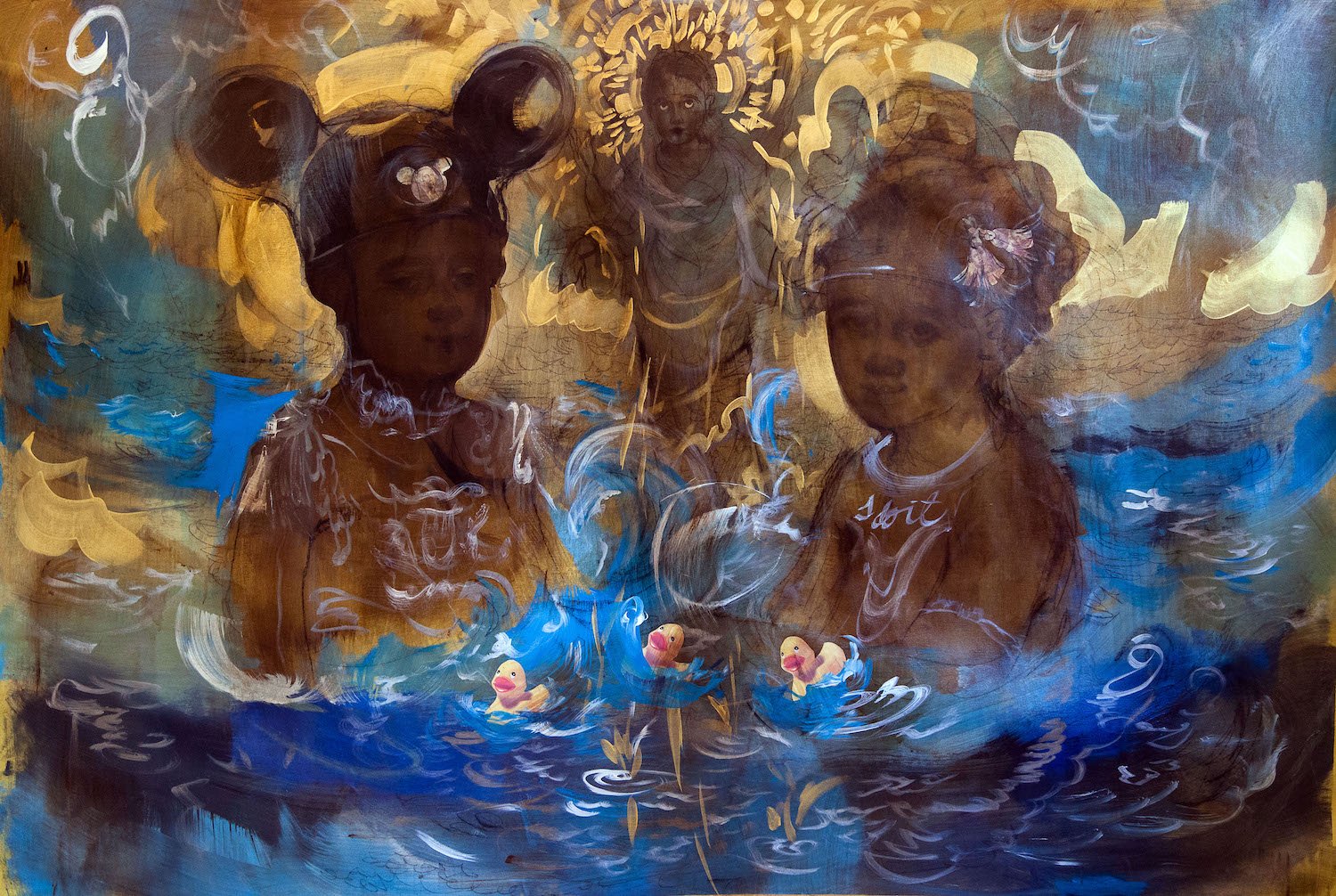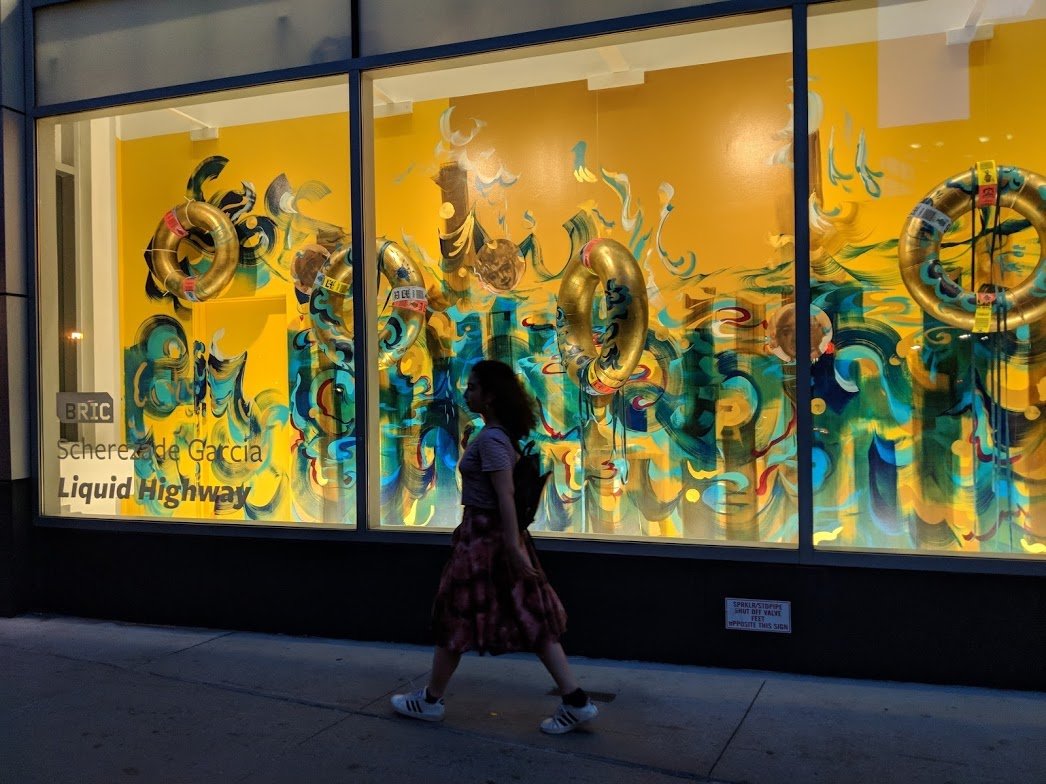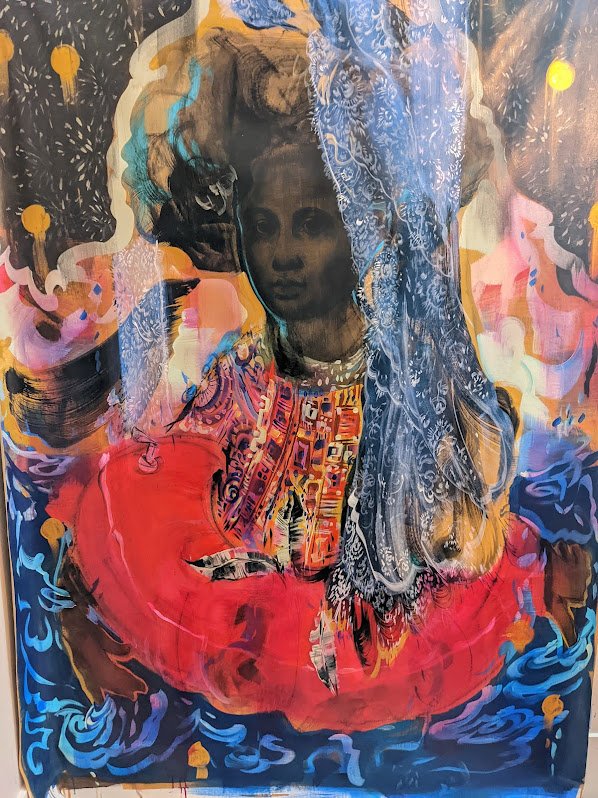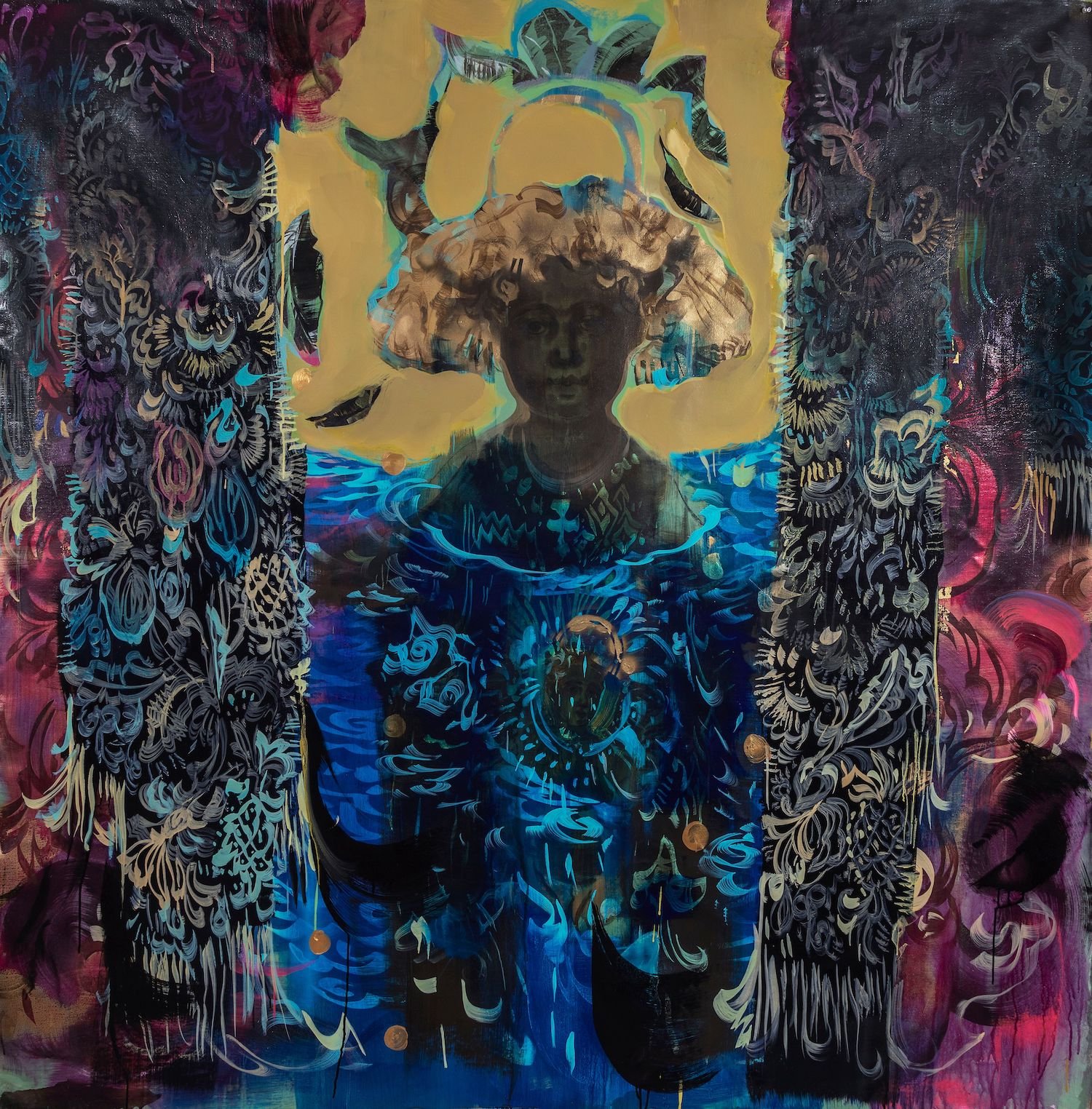Scherezade García
Nicolás Dumit Estévez Raful Espejo Ovalles: Chere! Finalmente we are able to convene through this conversation. How are you? I am asking from a place of speaking truth, not just the “ok” we are usually expected to say when someone inquires as to how we are. How are you?
Scherezade García: ¡Queridísimo, Dumit! Thank you so much for the invitation. Even though we have been trying to connect for a while you are always present in my world. Your ears must be burning. I am well, and as always on the verge of some kind of revolution. Or specifically at this moment, I am in a new adventure. So, it is exciting, and it is opening up new work and new perspectives on things.
NDEREO: Several years I had the fortune to meet Danilo de los Santos for the first time, at his home in Santiago, Dominican Republic. José Manuel Antuñano, a mutual friend, arranged this encounter. I still can picture the plants climbing on his walls and a sense of the tropics that is so much of who I am and who you might be. But what struck me was this revelation: Danilo mentioned that he has been painting Marolas for decades, the Black women in his work, and that one day he realized that, all along, he had been painting himself. These Marolas were him. Who are the figures and presences in your paintings? Tell me!
SG: I adored Danilo and his work. I had the fortune of meeting him at his home and had that priceless sentiment of knowing him forever. We engaged in conversation on a topic that is essential to me…history, archiving, and the importance of all that for the new generations and all of us. He gave me a tour of his visual work, which was a treat. The characters in my paintings are what I like to call “collective portraits.” They represent communities. It connects with my politics of inclusivity (actions + outcomes). For example: I always state that race and the politics of color (formally and conceptually) are essential to my work. The cinnamon figure has been a constant in my work since 1996. Mixing all the colors in a palette is an inclusive action; the outcome of such an activity is cinnamon color. The new race, represented by her ever-present cinnamon figure, states the creation of a new aesthetic. This unique aesthetic with new rules originated from the lush landscape of our tropics, the transplantation, appropriation, and transformation of traditions. Also, the Catholic iconography with my mixed-race warrior/angels is a way of colonizing the colonizers by appropriating, transforming, and creating new icons. That is part of my core values; I have so many colors in my skin (therefore, many stories). I belong to so much, and all those elements merge… my portraits cannot be focused on the likeness of specific anything; they are fluid, carrying the memory of many likenesses. Self-portraits of the many me.
NDEREO: You have lived in New York forever, before I got here 31 years ago, and in my eyes you are still connected to the Island. How do you do that? How do you nurture this link on daily basis?
SG: Yes! I am part of the second generation of Altos de Chavón/Parsons in NYC. I love New York, and I am a Dominican and a New Yorker, and also a pan-Caribbean. LOL. Thanks for your question. The “One foot here/One foot there” was and is essential to me. I discussed the extended island; coming from an island and moving to another island makes me think of the emotional transformation of geography. This is the thing… as a child, I was involved in the arts. I, along with my sister, Raul Recio, Julio Valdez, Miguel Tio, many colleagues who reside in Santo Domingo and New York, was part of Centro de Arte Nidia Serra en la Zona Colonial. We were then eight-17 years old. We were part of mural and poster projects, which were an essential part of my daily activities. That connection stayed with me and helped to continue my presence even when I decided to build my everyday life in NYC. I am an adventure, even with such a sense of home. Lol
NDEREO: I always said that I could not wait to be 50 to say what was really in my mind-heart. I am 55. However, no one should wait this long to speak out. You are, according to me, a precursor. Your paintings have paved the way for many of the creatives that have now become stars in the art industry. Your work encapsulates so much of what is affirmed and celebrated now. Can you speak about your trajectory and those who brought you here to this very moment with so much love?
SG: Thank you so much for your words. It is such a compliment. It is appreciated. I feel there is so much to do still and so many changes we have to make in the art world and its misguided values. So much beauty and greatness that is constantly silenced, and I dream and aim to be an agent of change. It is the only road to take. I come from a family of teachers, artists, and writers. I grew up around music and being proud of my country and history. My mother was very involved with us. It was lots of storytelling, playing theater, and inventing with my cousins. My parents were a good team, and my extended family was always involved in all our projects. I think that paved the way for my appreciation of community and to appreciate people and their different talents. I belong to my family and my childhood. That treasure, that joy, is always with me.
NDEREO: You and your sister, Iliana Emilia García, come to my mind as twins. You are both creatives, you share a home and have raised your children in community. I admire that. Can you speak about sisterhood in whatever way resonates with you?
SG: My sister and I are very different, and since we were little my mother celebrated how different we were and how that was an advantage. I waited so long for my sister, and I was elated when she was born! I am three years and a half older. We always have been close, and we both know that we bring different flavors and perspectives to our relationship. Sameness has never been part of our dynamic. We have a circle of friends with whom we do not share and others who become part of our worlds. Our daughters are all creative, and in the creative fields. As many similarities and overlapping values they share, I think that we have instilled in them a sense of independence, which I believe helps them to develop their individual selves, love, and to be part of the community at large.
NDEREO: We attended the same school, Altos de Chavón – Parsons in the Dominican Republic. For years you have served as an ambassador to this place helping students from the Island get acquainted to New York City. How has this wonderful connection influenced who you might be and the work that you do?
SG: We do have so much history in common. When I arrived in NYC to attend Parsons, I felt supported by the previous Chavoneros at Parsons. We were not too many, and the affiliation between Altos and Parsons was young. We got attention, and we had a sense of community. I always considered the importance of community with not only the Latino community at Parsons but to any international students anywhere. When I became part of the faculty at Parsons in 2010, I had the opportunity to become an official liaison to the Chavoneros and was supported by the administration at Parsons. It was something that I was already doing unofficially. It is an extension of how I approach teaching and the constant learning that comes when this is successful and becomes a give and receive between all participants. It's been a gift to know the newer generation, share, question, laugh, invent and try to change things. Seeing them embark on their art journey and start sharing resources and experiences has been a gift. I am grateful for that.
NDEREO: How are you feeding your soul at the moment? For me is colors. I have to bathe, dress, eat, see…colors. I am a child of the Caribbean; a Caribeño with a coconut for a heart. I am listening to you, another chromophile.
SG: I am a walker. I walk a lot as a way of meditation but also to be in contact with the land. I walk alone in silence, observe the neighborhood, greet people from the block, go around the Brooklyn shore, and enjoy the sight of Manhattan across the water. I connect with the weather that way also, and with the colors, the feel, and the smells of summer and summer gatherings. Sometimes, I go around Prospect Park or cross the Brooklyn Bridge. I love it!
NDEREO: What is your favorite color, by the way, and how do you embody it?
SG: I am such a pirate of the Caribbean. I love them all!!! My favorite color depends on the light. I love orange because it warms anything, and blue because it cools it. I like shades of greys because they ground things…it is a dance to convey my sense of paradise. I love when it rains and how everything gets veiled by the water and light that comes afterward. I exercise observation and silence to enjoy it.
NDEREO: There so much conversation about Latinidad/Latinxidad with all of its complexities and potentialities. I like the freedom to name myself and the fluidity that comes with it. How do you swim the waves of identities? You can be as specific or as general as you feel comfortable with.
SG: I am open to all those conversations and think they are relevant, and we need to be involved in keeping the platform plural. As you said, I agree with the complexities and potentialities. We need to be involved and express our fluid identities to keep the potentialities on the first row. As artists, I feel that we have the license to exercise our freedom our way. It is our responsibility. If we do not, we allow others to niche us in a box…it has always been easier to keep us in a box.
NDEREO: Would you be willing to close this conversation with a painting rendered with words? If so, go for it!
SG: LOL!!! You know, a rap came to mind. This is the statement of my Liquid Highway (formerly the ocean, the sea). I think it conveys so much of everything I do: “The Atlantic/ My Liquid Highway, that blue liquid road and profound obstacle provokes my imagination. The blue sea represents the way out and the frontier. It maps stories about freedom, slavery, and survival, it carries our DNA, and it’s an endless source of stories, evolving continuously, reminding us the fluidity of our identity, our collective memory. Resistance through beauty and joy. Las Americas transformed our world, created new values, a new race, redefined Christianity, and geography. In my neo-baroque tradition, with its inclusivity of spirit, I navigate between tragedy, beauty, carnaval, and traces of divinity.”
Gracias mi querido Dumit!!!
Scherezade García is a painter, printmaker, and installation artist whose work often explores allegories of history, migration, collective and ancestral memory, and cultural colonization and politics. A co-founder of the Dominican York Proyecto GRÁFICA, she holds an AAS from Altos de Chavón School of Design, a BFA from Parsons School of Design | The New School, and an MFA from The City College of New York, CUNY. García has been featured in solo and duo exhibitions at the Art Museum of the Americas, Clifford Art Gallery at Colgate University, Miller Theater at Columbia University, Lehman College Art Gallery, Crossroads Gallery at the University of Notre Dame, Museo de Arte Moderno de Santo Domingo and others. She has participated in the Havana Biennial, the International Biennial of Paintings at Haute de Cagnes, the IV Caribbean Biennial, Trienal Poli/Gráfica de San Juan, Latin American Biennial, BRIC Biennial, Venice Autonomous Biennial, and international fairs. Her work is included in the permanent collections of the Smithsonian American Art Museum, the Art Museum of the Americas, El Museo del Barrio, The Housatonic Museum of Art, El Museo de Arte Moderno in Santo Domingo, and others.
García is the recipient of the Joan Mitchell Foundation Painters & Sculptors Grant (2015) and the Colene Brown Art Prize (2020). An edited monograph on her work Scherezade García: From This Side of the Atlantic, was published in 2020 by the Art Museum of the Americas. She is a member of the Artist Advisory Council of Arts Connection and No Longer Empty. She sits on the Board of Directors of the College Art Association (2020-2024).
García is represented by Praxis Art Gallery in New York, and IBIS Art Gallery in New Orleans.
Her artist's papers can be found at the Archives of American Art, Smithsonian Institution. She currently lives in Brooklyn, NY, and Austin, TX.
Scherezade García / Related links: Website / IG / email / Smithsonian
Images above courtesy of Scherezade García







